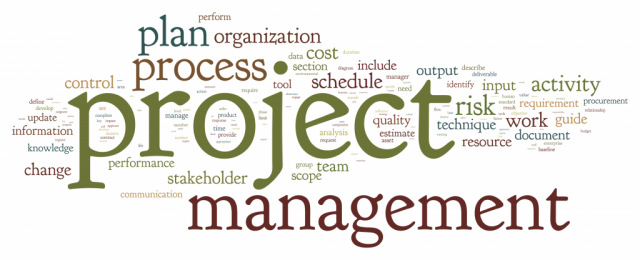6 Ways Project Managers Can Stay on Schedule

 A project that stays on schedule from conception until completion is a god send for most project managers. Some projects can go smoothly, while others invariably get hit with some sort of setback. As a project manager, you are accountable and responsible for how well or badly a project goes.
A project that stays on schedule from conception until completion is a god send for most project managers. Some projects can go smoothly, while others invariably get hit with some sort of setback. As a project manager, you are accountable and responsible for how well or badly a project goes.
There are some ways that project managers can mitigate encountering project slippage or delays. There are ways to set proper milestones to help in that mitigation, and of course choosing the proper team for the project will go a long way to reduce most of any project’s slippage.
Plan the Work by Utilising a Project Definition Document
There is a tendency for some companies to short change the planning process in favour of just jumping in and getting to work on a project. This is a fallacy. The time spent creating a proper project plan will result in a reduced cost and duration, and increased quality of the project over its lifespan. The project definition is the primary deliverable item from the planning process and describes all the aspects of the project on a high level. Once the customer and relevant stakeholders approve the project, it becomes the basis for the work to be performed. Items this document will cover should include:
- Project overview. The background of the project. Why is it taking place, what is driving the need for the project, and its benefits.
- What will be accomplished and what will be achieved.
- Scope: What features will be implemented? Which departments will be converted? What is specifically out of scope?
- Assumptions and risks: What events are you taking for granted (assumptions), and what events are you concerned about?
- Approach: How will the project unfold and proceed?
- Organisation: Show the significant roles on the project. Identifying the project manager is easy, but who is the sponsor? Who is on the project team? Are any of the stakeholders represented?
- Signature page: Ask the sponsor and key stakeholders to approve this document, signifying that they agree on what is planned.
- Initial effort, cost, and duration estimates: These should start as best-guess estimates and then be revised, if necessary, when the work plan is completed.
Determine the Critical Path
Determining the critical path a project must take ensures that a project is completed on time, or even better; ahead of time. Here’s how to determine the critical path for your project:
- List all necessary tasks. Make a list of all the tasks needed to complete the project and apply a timetable to mark their completion. This is also a great way to begin measuring your milestones.
- Prioritise those tasks. Like putting together a puzzle, you must first determine how those tasks should flow. Always start with the biggest aspects of your project, as they will most likely be your biggest time and resource sink, and typically lay the foundation for the remainder of your tasks.
- Utilise a Gantt Chart where possible. The visible representation that a Gantt Chart provides can be indispensable during planning and reporting stages of every project.
- Seeing the critical path. The largest path of tasks displayed in your Gantt Chart is your critical path. Bear in mind that you may have more than one critical path for any given project. Don’t assume that any additional tasks are not part of that critical path.
Use Proper Planning Software
A good piece of project planning software for business will reduce or eliminate the Achilles Heel of a project. That Achilles Heel is being unable to keep track of multiple projects that you are responsible for simultaneously. Resource planning is the main Achilles heel when dealing with multiple projects in one environment. Spreadsheets and roster based programs will not be able to cut it when it’s time to meet deadlines and milestones; nor will they allow you to report on progress when requested or needed on demand. You will also be unable to schedule resources to projects when using these old programs. This is something that can be done with planning software.
Set Expectations Early
From the onset of your project, you and your team should know what the expectations of the project are. This includes the quality of work expected, who is responsible for each particular task, and how team communication should be handled. The sooner your team knows what is expected of them, the easier it will be for them to transition to working for the common goal, and will generally eliminate any employee confusion or assumptions about the project from the start of the project.
Know the Strengths and Weaknesses of Your Team
Knowing the strengths and weaknesses of your team is integral to making sure your project stays on track both in duration and in terms of cost. Choose from your available resource pool in terms of their strengths as it relates to the project and how well they work as a cohesive unit.
Familiarise yourself with their weaknesses so that adjustments can be made as needed; whether it is extra resources or something else entirely that is needed. Decide if you need more members on your team, and recruit as needed. However, you should be strategic about extra recruiting. Too many people in a project can dilute it and slow it down. Conversely, not enough people on the project can lead to an unbalanced workload and also slow the project down.
Plan Around Your Margins
Many companies are only able to see in hindsight what the margin was that they achieved for their project. For some this often leads to disappointment. Their project ended up being less profitable as they had originally thought. This can even happen while remaining within the allocated man hours for a given project. Though an analysis we can see this happened. After the project was completed you can see where expenditures could have been reduced. Common places where expenditures tend to increase is using more freelancers than internal employees for a project; and using more senior staff members than juniors for a project.
Being able to see ahead of time what your costs are, both in terms of money and human resources can help you determine whether your project is truly going to be profitable. Keep in mind the cost of your freelancers, your junior employees, and your senior employees and build a balanced team that can work efficiently on the project.
Stay on Schedule
As you can easily see, there are ways to reduce project slippage; more often than not, long before it cripples your deadlines. Knowing how your team works and where their strength and weakness lies, is crucial for assigning the appropriate tasks. At the same time, having a clear definition of how a project should unfold along with a list of steps how it should be done and overall objective of the project, will help your team members see the big picture and understand what is expected of them.
All of this can easily accomplished by using a proper project management tool that will help you implement the tips outlined in this article. Use them to outline the exact project steps, assign deadlines and roles, and keep everybody accountable and on schedule.





No Comment